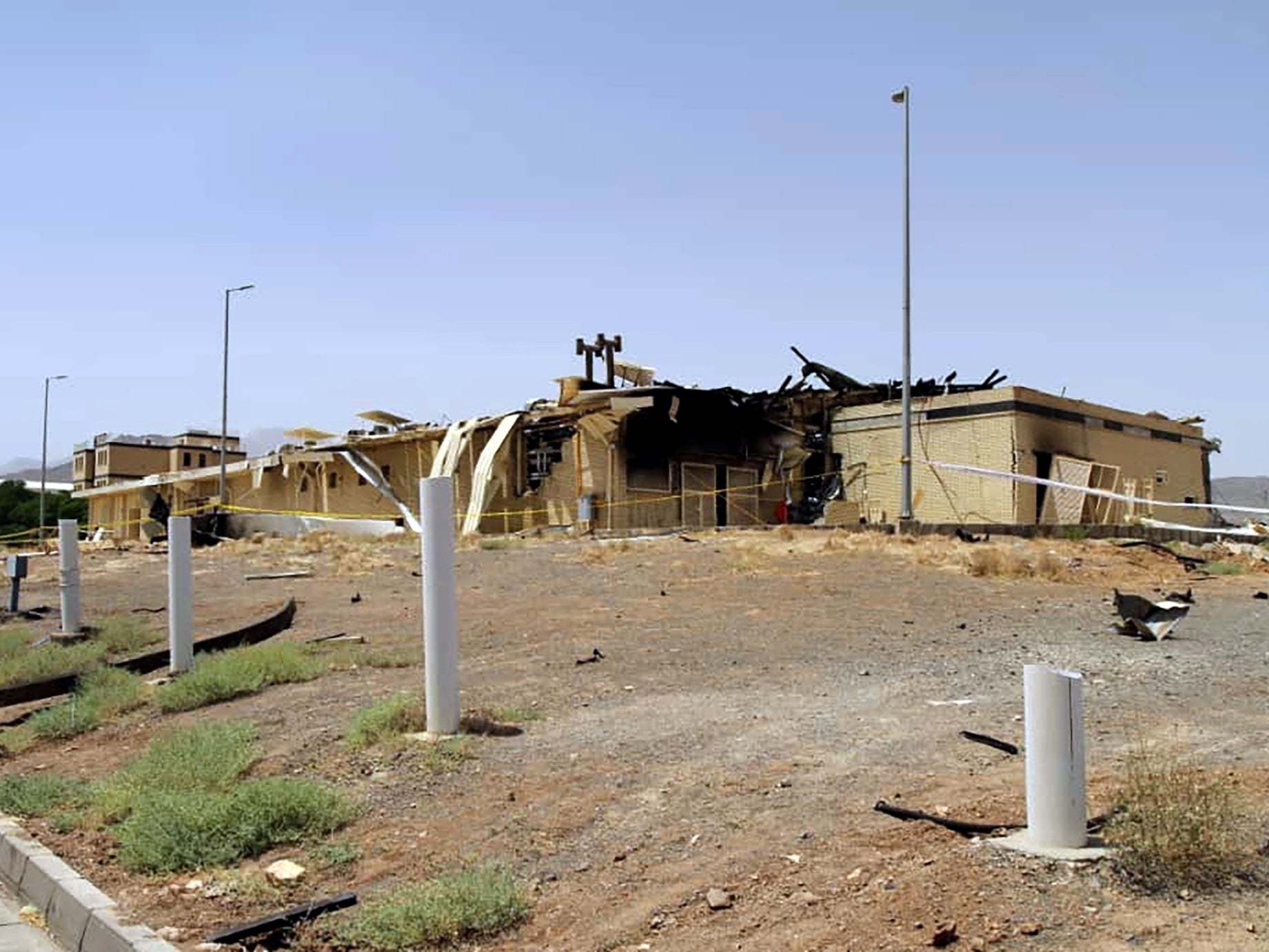Fire damages Iranian nuclear enrichment facility in Natanz
Regime plays down possible explosion as an ‘incident’ at an ‘inactive shed’

Your support helps us to tell the story
From reproductive rights to climate change to Big Tech, The Independent is on the ground when the story is developing. Whether it's investigating the financials of Elon Musk's pro-Trump PAC or producing our latest documentary, 'The A Word', which shines a light on the American women fighting for reproductive rights, we know how important it is to parse out the facts from the messaging.
At such a critical moment in US history, we need reporters on the ground. Your donation allows us to keep sending journalists to speak to both sides of the story.
The Independent is trusted by Americans across the entire political spectrum. And unlike many other quality news outlets, we choose not to lock Americans out of our reporting and analysis with paywalls. We believe quality journalism should be available to everyone, paid for by those who can afford it.
Your support makes all the difference.Iran‘s key nuclear facility was hit by a mysterious fire early on Thursday, prompting suspicions it had been targeted by saboteurs.
The Atomic Energy Organisation of Iran sought to downplay the blaze at building on the site of a centrifuge production plant in Natanz by insisting it only involved a half-built “industrial shed”.
Spokesman Behruz Kamalvandi said there were no fatalities or concerns about contamination in the area.
The nuclear enrichment site, which was built underground to withstand airstrikes, was previously targeted by the Stuxnet computer virus, a cyberweapon believed to have been developed by the US and Israel.
And the fire comes six months after a US drone strike killed a top Iranian general Qasem Soleimani in Baghdad and Tehran launched a retaliatory ballistic missile attack targeting American forces in Iraq.
Iran’s state-run IRNA news agency published a commentary addressing the possibility of sabotage by enemy nations such as Israel and the US following the fire.
“The Islamic Republic of Iran has so far has tried to prevent intensifying crises and the formation of unpredictable conditions and situations,” it said. But “the crossing of red lines of the Islamic Republic of Iran by hostile countries, especially the Zionist regime and the U.S., means that strategy ... should be revised.”
The New York Times reported a claim by an anonymous Middle Eastern intelligence official that the blast was caused by an explosive device planted inside the centrifuge production facility.
Meanwhile BBC Persian journalists reported they had been sent an email claiming responsibility for an attack on Natanz by a group of dissidents calling themselves ”Homeland Cheetahs”.
The fire began around 2am local time in the northwest corner of the Natanz compound in Iran’s central Isfahan province, according to data collected by a US National Oceanic and Atmospheric Administration satellite that tracks fires from space.
Images later released by Iranian state media show a two-story brick building with scorch marks and a door that looked blown off its hinges, suggesting an explosion accompanied the blaze.
“There are physical and financial damages and we are investigating to assess,” Mr Kamalvandi told Iranian state television. “Furthermore, there has been no interruption in the work of the enrichment site. Thank God, the site is continuing its work as before.”
The US State Department said that officials were monitoring reports of a fire and added: “This incident serves as another reminder of how the Iranian regime continues to prioritise its misguided nuclear program to the detriment of the Iranian people’s needs.”
The site of the fire corresponds to a newly opened centrifuge production facility, said Fabian Hinz, a researcher at the James Martin Center for Nonproliferation Studies in Monterey, California.
“It would delay the advancement of the centrifuge technology quite a bit at Natanz,” Mr Hinz said. “Once you have done your research and development, you can’t undo that research and development. Targeting them would be very useful.”
The International Atomic Energy Agency, which monitors the Natanz site as part of the 2015 nuclear deal with Iran, said in a statement it was aware of reports of the fire. “We currently anticipate no impact on the IAEA’s safeguards verification activities,” the Vienna-based agency said.
Iran had agreed to curb its nuclear program in exchange for the removal of most international sanctions but has reduced its commitment to the deal since Donald Trump withdrew the US from the agreement in 2018 and intensified sanctions.
Additional reporting by agencies
Join our commenting forum
Join thought-provoking conversations, follow other Independent readers and see their replies
Comments